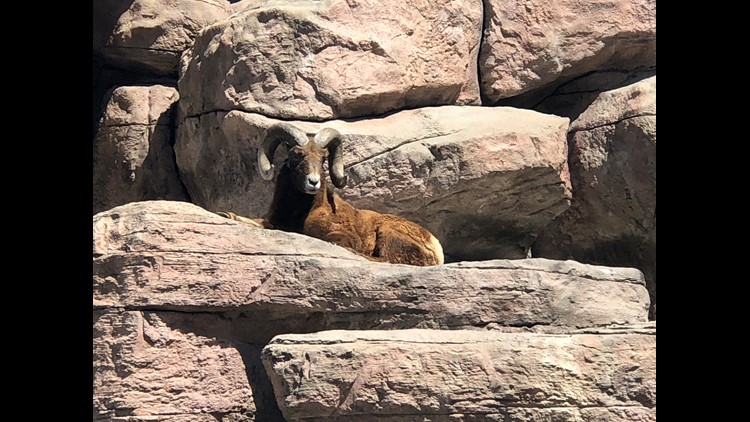Rocky Mountain bighorn sheep are thriving in Colorado -- in fact, we have one of the largest populations in the country!
Unfortunately, this has not always been the case. In the 1950s, Rocky Mountain bighorn sheep nearly went extinct. Domestic sheep brought in by local farmers were spreading disease to this wild animal and almost wiped out their population.
So, the Colorado Division of Wildlife took an interest in the species and helped them rebound. The wild sheep now have their own rangeland… and domestic sheep are inoculated against diseases.
When you visit the Denver Zoo, you'll likely find the Rocky Mountain bighorn sheep laying out on the rocks, basking in the sun. But being native to Colorado, these sheep also see more than just sunshine.
They are hardy to Colorado’s wide range of conditions and the weather plays a big role in their lifestyle It determines how they look, where they are on the mountain, and even the best time to check them out!
According to Lindsey Kirkman, the assistant curator of Pachyderms at the Denver Zoo, Rocky Mountain bighorn sheep are somewhat low maintenance.
“These guys are one of the few animals at the Denver Zoo that we do practically nothing for in terms of management,” she said. “They are native to Colorado so they can take anything that the Colorado weather throws at them. They are used to snow and in the summer time they will go up into the mountains at altitudes of 8,000 to 14,000 feet. And they’re very agile and very good climbers. In the fall they’ll start to move down a little bit lower in altitude to start to graze at about 5,000 to 2,000 feet.”
The best time to see a bighorn sheep in the wild is right now. Kirkman says this is a great time of year to go out and see them. Since they are lambing, you can actually see the lambs being born, playing with one another and following mom around. In fact, the lambs are able to follow mom and scale the steep terrain within a day or so.
While you cannot find lambs at the Denver Zoo, they were still fascinating to watch. Starting in midApril the sheep start to shed their winter coat. The process doesn't last long, only a couple of weeks. Most of their winter coat will be gone by the time temperatures in Denver get really hot.
In the fall, as temperatures consistently dip below freezing, the Big Horn Sheep start producing a fluffy winter coat. It's a gradual process controlled by Colorado's climate.
While the zookeepers at the Denver Zoo don't have to do much to accommodate our state mammal, they still offer them options.
"They always have the option to go inside,” Kirkland said. “If you look behind those rocks you can see a doorway that they can go back behind the rocks and there’s an enclosed shady area back there. But they rarely ever use it. They choose to stay outside. They really like their mountain and that’s what they are accustomed to.”
So if you want to go out to Colorado’s mountains and look for our Rocky Mountain bighorn sheep and those little lambs, look for a white rump patch on the south and western facing rocks during the day.
That’s where it’s nice and warm. Their white rump will set them apart from the rest of the rock!



